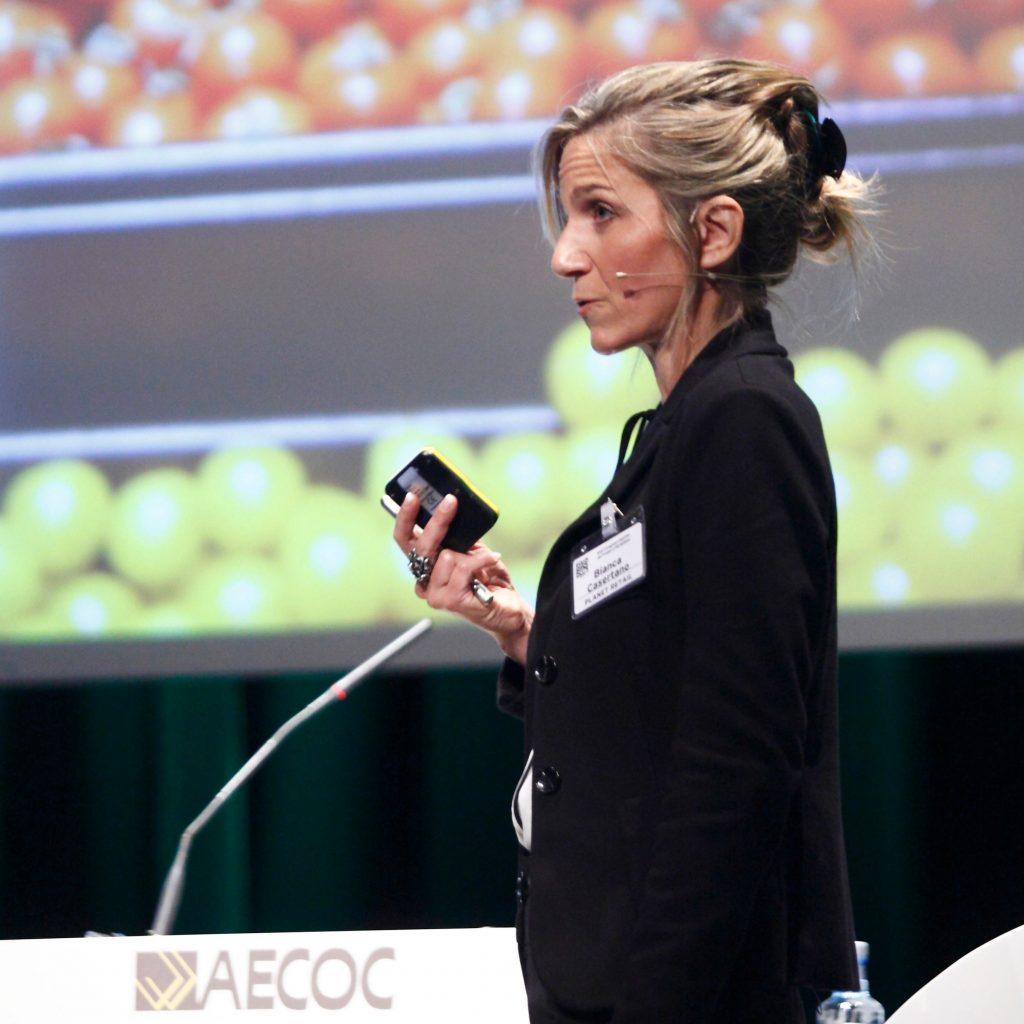What Europe’s new retail landscape means for fresh produce
Planet Retail’s Bianca Casertano on how Europe’s changing retail sector will affect the fresh fruit and vegetables category
Yesterday we shared the Frankfurt-based retail analyst’s analysis of the key shifts in grocery retail in Western Europe. Casertano charted the rise of the discounter and convenience stores, the demographic changes behind the decline of big box stores, and the blurring of lines between hypermarkets, discounters and convenience stores. Here, in part two, read Eurofresh Distribution’s interview with Casertano after her presentation on this topic at the AECOC Fruit and Vegetable Congress in Valencia in June as she discusses the fresh fruit and vegetables category.
What do these changes imply for the fresh produce assortment in stores?
What is really interesting to know is that the shift from big box formats to small box formats, and online, means a change in product ranges. What you had in the past, this huge volume of fruit and vegetables on offer, will decrease both in volume and product diversity.
In city locations with a small sales area, you have to choose which fruit and vegetables you offer. Normally you choose the convenience oriented things, and focus on less variety. You can’t offer all the exotic fruit and vegetables anymore, as in hypermarkets.
For example, in a hypermarket or in a normal supermarket you can find carrots with some greenery on them. In convenience stores, maybe baby carrots is the product you need, because it’s ready to eat and there’s another package size. The shift towards small, inner city locations will have a huge impact on these product groups.
Could you share an example of innovation you’ve seen?
Demand is growing for pre-prepared and pre-washed products, because people don’t want to spend much time on that. There are some convenience store where you can wash your fruit so you can eat it right after you buy it. I think that is a genius idea. It costs almost nothing and it helps you increase the sale of fruit and vegetables. How often do you enter a store and you would like to have an apple or a peach right now? And some ICA stores in Sweden allow you to make your own smoothie onsite from pre-cut fruit and vegetables you buy there. These are small examples of innovative things that can increase sales for this segment.
What should the sector bear in mind amid the changing retail landscape?
That multi channel is on the rise. They are not straight borders anymore, the formats will merge, and this means more complexity. For retailers that means more investments but these high investments will definitely pay off in the end. Because at the moment, if as a hypermarket operator you say, “No, I don’t want to launch ‘click and collect’, e-commerce is another sector and I don’t want to have to do something with it,” then you will fail, because people expect to at least have the possibility of. Although it’s not profitable for the retailer, they have to react to this trend. Also, because of the demographic changes I talked about, retailers need to go more into the inner city locations, not the outskirts anymore.
Is a move to less loose and more pre-packed product inevitable?
I see a trend in Germany towards more of these products, packaged products, or already washed products, because people don’t have time anymore to prepare their food. They want to have it ready to eat, and therefore I think this will increase in the future.
How might the growth of e-commerce affect producer prices?
As far as the online trend is concerned, I think you can’t offer fruit and vegetables online for a higher price just to get the right margin. Grocery e-commerce is very cost intensive and people won’t pay a higher price just because the system is more expensive. I don’t think that prices will go up, because people won’t accept that. What we currently see in Germany is that prices for groceries have really decreased but people don’t have the feeling, because overall they think they have to spend more for everything, but this is not true for groceries.
You have stressed there are risks in over-generalising and that not every market follows the convenience trend. How does your home market of Germany vary?
In Germany you don’t have so many hypermarkets. you have a high density of discounters. Everywhere you have a small shop within the cities, so if you want to buy something you can buy it anywhere. And in Germany margins for grocery food are so low that it’s very difficult to have a profitable online business for grocery. German shoppers are quite conservative, as well.
A last word of advice?
Suppliers often bank on countries in emerging markets and not on cities. This is a huge mistake because there are so many huge cities in emerging markets, cities with more than 5 million inhabitants.
Just as an example, there are 40 countries in the EU which have less population than Moscow. As a retailer, and also as a supplier, you have to focus on these mega cities, not on the country. This is an area in which Planet Retail has invested significant research.
JB
Read part 1
Photo: (top) Bianca Casertano during AECOC conference, by Roger Castellón
See some of our photos from this year’s AECOC Fruit and Vegetable Congress


